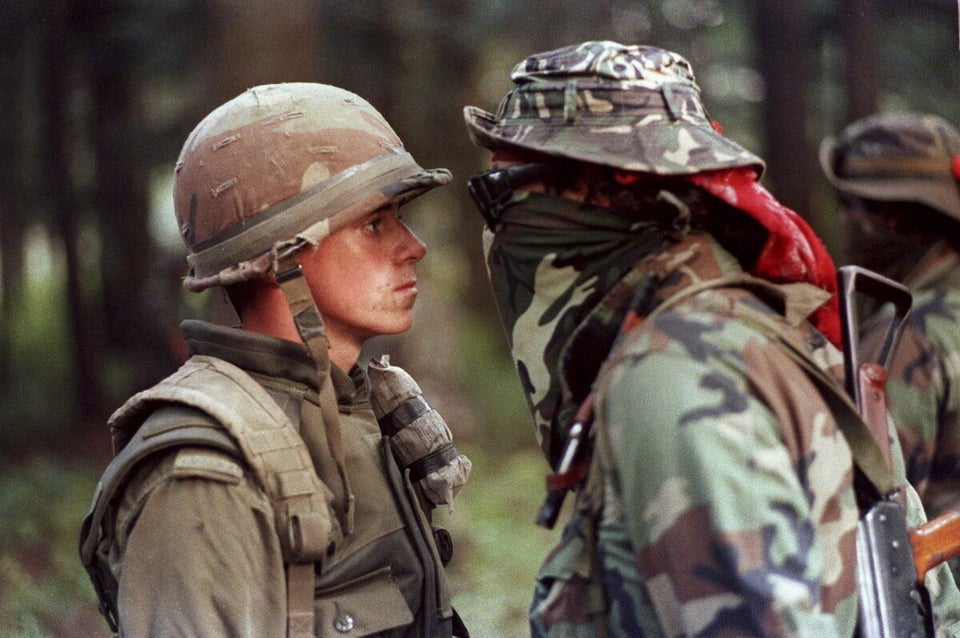The recent decision by the Assembly of First Nations to reject Ottawa's musings about reforming on-reserve education was an example of a react-first, ask-questions later approach. It was unhelpful, most of all to First Nations kids.
For one thing, the government's upcoming First Nation Education legislation hasn't even been created; it won't be introduced in Parliament until 2014. But that didn't stop AFN leader Shawn Atleo, in early October, from rejecting possible reforms two years in advance. Atleo and other Native politicians should reconsider, especially given the dismal state of on-reserve education for much of the aboriginal population.
Education statistics from the 2006 census make clear the need for reform (2011 results are not yet available): 50 per cent of "Registered Indians" do not have even a high school diploma. In comparison, just 23 per cent of other Canadians lack a high school diploma.
But opposition to reform is at least as entrenched as the need for it.
Part of the opposition is driven by a healthy suspicion of remedies imposed by Ottawa. Some native leaders dislike federal diktats just as premiers would if they were told how to run their education bureaucracies.
However, John Duncan, federal aboriginal affairs minister, already made clear that the legislation will only be drafted after "intensive consultation" with First Nations. So it's a bit much to oppose possible reforms now.
Moreover, if such education reforms turn out to be voluntary, as they must be if parents and local reserve leaders are to support them, the notion anyone will be forced to do anything is a non-issue.
In addition, until reserves are self-sustaining out of locally-created revenues, other taxpayers who provide the $1.7 billion now spent annually for on-reserve education for 117,500 children (with another $275-million announced by Duncan) also deserve some say in how such monies will be spent in the future.
The deeper reason some native leaders may oppose any new thinking about education is the same reason some are opposed to reform of the reserve system itself: reforms may weaken the influence of leaders over those who live on reserves. But such reform is needed, including options for off-reserve education.
The relative success of off-reserve First Nations kids versus those on reserve is revealing. A 2009 report from Statistics Canada found that seven out of 10 off-reserve First Nations children (78,325 of them) were reported by their parents to be doing "very well" or "well" in school. Also, the parents of more than 90 per cent of such children "agreed" or "strongly agreed" that their child's school gave enough information about academic progress, attendance and behaviour.
The statistical agency reported that those findings are similar to those reported (by their parents) for non-native children.
That noted, parental satisfaction is not the same as achievement equal to non-native children.
First Nations young people in provincial schools do not complete high school at the same rate as their off-reserve, non-native classmates, this also according to Statistics Canada. However, they do have higher completion rates than students who live on-reserve.
For example, 50 per cent of the First Nations people aged 25 to 64 living on-reserve had not completed high school. That compares to 30 per cent of First Nations people who live off-reserve.
Also, only 14 per cent of those on reserve had a college diploma, whereas the figure for First Nations people off-reserve was 20 per cent. Similarly, just four per cent of those living on-reserve had a university degree; that compares to nine per cent for First Nations people off-reserve.
Whenever the possibility of mixing more First Nations kids with non-native kids is brought up, some immediately have concerns over possible forced assimilation given past attempts to such an end. But integration (attending class with non-natives) is not assimilation. One can be Jewish in a public school without losing one's heritage and faith.
To have children rub shoulders with other kids of different backgrounds is something most people value. Most parents want their children to be exposed to others that think and live differently. It is how kids learn to appreciate and value diversity; it is how they become more tolerant.
First Nations children are doing better in off-reserve schools and their parents are mostly happy with how such schools perform. Given that reality, such types of education (along with many other choices) should also be part of the menu of educational options available to improve future outcomes for Canada's First Nation children.
FIRST NATIONS PROTESTS: FROM OKA TO CALEDONIA
